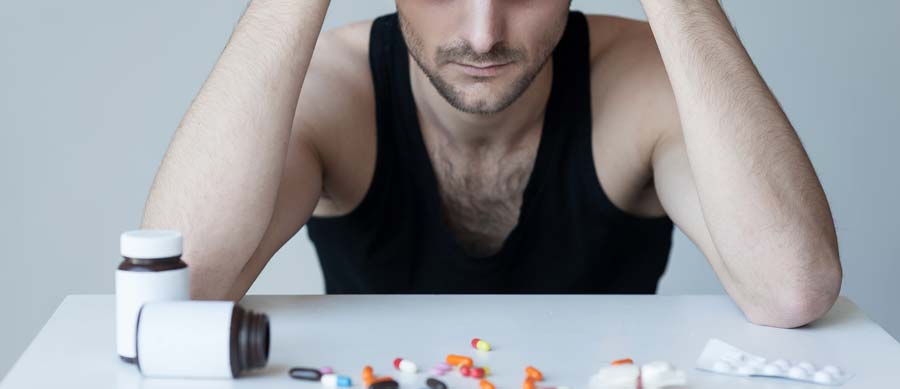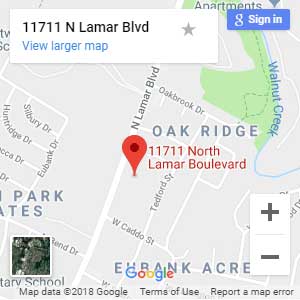Chronic misuse of prescription painkillers can lead to opioid use disorder, a chronic, life-changing condition that can’t be overcome with mere willpower. It affects 2 million Americans and continues to wreak havoc on our nation, killing more than 130 people every day.1
These staggering statistics may leave you wondering, “How do you kick a painkiller addiction for good?” Fortunately, it is very possible to beat opioid addiction and sustain long-term sobriety with the right treatment and support.
Table of contents
Why are Painkillers Addictive?
Painkillers are prescription opioid drugs. They work by interacting with opioid receptors on nerve cells in the body and brain to relieve feelings of pain.2 In the process, they also produce strong feelings of euphoria and relaxation.
With continued use over time, repeated use of prescription painkillers changes the way the brain functions. These changes can make you feel like you need the drug to feel normal. Once you are dependent on opioids, you begin to experience physical and emotional discomfort when the effects of the drug wear off, which can be a very strong motivator to take more. However, taking too much of a prescription opioid drug is very dangerous and is likely to cause an overdose, which can be fatal.
Although prescription painkillers are generally safe to use for a short time when prescribed by a doctor, chronic use of these drugs can cause tolerance, dependence, and addiction. Sometimes, a person may even become addicted when using a painkiller as directed.
More than 191 million opioid prescriptions were dispensed to Americans in 2017 and according to the U.S. Department of Health and Human Services, 10.3 million people misused prescription opioids in 2018.2,3
Signs of Opioid Use Disorder
Determining whether you or someone you know is addicted to prescription painkillers can be difficult, but there are certain risk factors and signs you can watch for. Common signs of an opioid use disorder include:
- Using more prescription opioids than you intended
- Using prescription opioids for longer than you intended
- Being unable to control or cut back on prescription opioid use
- Spending a lot of time getting painkillers or recovering from using them
- Having strong cravings to use painkillers
- Continuing to use prescription opioid drugs despite related social or legal problems
- Neglecting important activities at home, work, or school
- Continuing to use painkillers despite related physical or mental problems
- Needing more opioids to achieve the desired effects (tolerance)
- Experiencing symptoms of withdrawal when you try to stop using painkillers4
Side Effects of Painkiller Abuse
While painkiller abuse can cause tolerance and addiction, it also produces many other negative side effects, such as:
- Increased sensitivity to pain
- Constipation
- Nausea
- Vomiting
- Dry mouth
- Sleepiness
- Dizziness
- Confusion
- Depression
- Low levels of testosterone that can reduce sex drive, energy, and strength
- Itching
- Sweating5
Medical Detox for Painkiller Addiction
Opioid withdrawal symptoms often include cravings, anxiety, muscle aches, vomiting, abdominal cramping, tremors, and more, which can be extremely uncomfortable and difficult to manage.6 Quitting cold turkey can also make these symptoms worse.
If you want to stop taking prescription painkillers, a medical detox program is the safest and most effective way to do it. Medical treatment during detox involves gradually tapering off of the painkillers to allow your brain and body the time it needs to recover and re-stabilize.
Clinical support is also provided with individual and group counseling sessions (if you are able), which can help you deal with the psychological withdrawal symptoms and process emotional issues related to your addictive behaviors.
During the opioid detox process, medical professionals may also use replacement medications to minimize opioid withdrawal symptoms and help you adjust to sobriety more easily.
Medications Used to Treat Opioid Addiction
Medication-assisted treatment (MAT) is the most common type of treatment for prescription opioid addiction. It involves administering medication in conjunction with counseling, behavioral therapy, and support from loved ones. Below are examples of several FDA-approved medications that are used to treat opioid addiction.
- Methadone: Methadone is a long-acting opioid agonist that reduces opioid cravings and withdrawal symptoms. It is also used as a pain reliever, for treatment during drug detox, and for clients who are enrolled in opioid maintenance programs.7
- Buprenorphine: Buprenorphine is a partial opioid agonist that suppresses opioid withdrawal symptoms, reduces cravings, blocks the effects of other opioids, reduces opioid abuse, and helps clients stay in treatment. It is also less likely to be abused than other opioids because its maximum effects are much less powerful than other commonly abused opioid drugs.8
- Naltrexone: Naltrexone is an opioid antagonist that works by binding to opioid receptors and blocking the euphoric and sedative effects of opioid drugs. It is also reported to reduce opioid cravings. There is no abuse potential since this drug does not produce a high, but if a person uses an opioid drug while taking Naltrexone, they will experience uncomfortable withdrawal symptoms.9
- Buprenorphine/naloxone combination medications: The FDA has also approved several combination medications that help reduce cravings and withdrawal symptoms, including Suboxone, Bunavail, and Zubsolv.10
Medication-assisted treatment is highly effective for treating opioid use disorder, but it is severely under-utilized due to common misconceptions about trading one drug addiction for another.
Drug Rehab for Painkiller Addiction
After detox, you may be physically sober but there is still much more work to do. Medical detox addresses the physical aspects of addiction but drug rehab helps clients understand the motivations behind their addictive behaviors and make positive changes that will help them sustain a sober lifestyle.
Both drug detox and rehab are essential parts of the addiction treatment process and are part of a comprehensive, personalized approach to treatment. Just as every person is unique, so are their addictions. As a result, treatment requires individualized care and support every step of the way.
There are many different types of drug rehab programs, but research strongly suggests that positive treatment outcomes are contingent on adequate treatment duration. This means a person is much more likely to sustain their sobriety when they attend treatment for an adequate length of time, depending on their personal needs and circumstances.
Depending on the severity of your painkiller addiction, an addiction treatment provider may recommend residential rehab or an intensive outpatient program (IOP) after you complete detox. Both options are equally recovery-focused but they provide different levels of structure and support.
How to Treat Chronic Pain without Medication
If you take prescription opioid medications to relieve chronic pain, the recovery process can be much more complex. However, there are many different ways to cope with chronic pain without the use of opioid medications.
- Massage therapy: Studies have shown that massages can help reduce pain associated with certain types of pain, such as low back pain, fibromyalgia, post-operative pain, tension headaches, and arthritis.11 New research also strongly suggests that massage therapy can relieve pain and anxiety among cancer patients.12
- Adequate sleep: New research published in the Journal of Neuroscience found that sleep deprivation heightens the brain’s sensitivity to pain and getting adequate sleep at night acts as a natural pain reliever.13 The National Sleep Foundation recommends that adults get seven to nine hours of sleep each night for optimal health.14
- Good nutrition: Scientists have discovered that a healthy diet can help your immune system function well and help reduce chronic inflammation.15 Cutting out bad, inflammatory processed foods with low nutritional value is a great place to start. This includes food items like soda, white bread, and processed meat. Instead, choose healthier options such as whole grains, vegetables, fruit, and olive oil.
- Acupuncture: Acupuncture is a part of Traditional Chinese Medicine that works by applying needles, heat, and pressure to certain points on the body. Studies suggest that acupuncture works particularly well on chronic pain, like back and knee pain, osteoarthritis, tension headaches, and migraines.16
- Exercise: Regular exercise isn’t a quick fix, but over time, it can help people who suffer from chronic pain. This may seem counterproductive, but certain exercises work to relieve pain by improving strength and flexibility. Physical exercise also releases endorphins, which are the body’s natural painkillers.17
- Yoga and meditation: Yoga and meditation not only work to relieve chronic pain and increase mobility, but these relaxation practices also improve your mental health and well-being. Studies have found yoga to be effective for pain relief among people with lower back pain, arthritis, fibromyalgia, migraines, and many other types of chronic pain conditions.18
Relapse Prevention in Recovery
Preventing and managing episodes of relapse is another essential part of the recovery process. Rates of relapse are high among those who are recovering from painkiller addiction and other substance use disorders, but peer support and long-term treatment are two of the most influential tools that help people stay sober.
First, people in recovery must have a relapse prevention plan that addresses their triggers, risk factors, and also outlines a plan of action to follow if they do relapse.
If a relapse happens, it does not mean that treatment failed or that the person is not in recovery anymore. It simply means that the person needs to take another look at the ways they deal with stress, high-risk environments, and other events, emotions, and occurrences that make them want to use drugs or alcohol again.
Structured peer support can also provide much-needed assistance and accountability in early recovery. These programs also help clients connect with other sober and like-minded individuals. Examples of recovery care services and programs include:
- Sober living programs: Sober living programs offer safe, drug-free, gender-specific living environments to help people in recovery adjust to life after rehab. These homes also provide additional recovery support services like on-site staff, regular drug and alcohol testing, employment assistance, and volunteer placement.
- Peer recovery support programs: These programs offer one-on-one peer support by providing weekly or bi-weekly sessions, family support, and 24/7 access to a sober support person. Peer Recovery Support Specialists are in recovery themselves and can provide practical and sound guidance throughout the early stages of recovery.
- Aftercare: Aftercare groups meet in a safe, clinical environment that is designed to help clients work through personal issues related to their recovery, provide support to others, and discuss topics related to ongoing abstinence from drugs and alcohol.
- Community support groups: Community fellowships like Alcoholics Anonymous (AA), Narcotics Anonymous (NA), Smart Recovery, and others meet in cities and towns all over the United States. These groups provide additional support, accountability, and opportunities to engage with other people in recovery.
Get Help for Painkiller Addiction Today
If you or a loved one is addicted to painkillers, there is help available. Our caring and experienced detox professionals have helped countless others overcome their addictions and move on to live a happy and sober life. Call (888) 857-0557 to speak with a Briarwood representative about your treatment options.
References:
- https://www.drugabuse.gov/drugs-abuse/opioids#summary-of-the-issue
- https://www.cdc.gov/drugoverdose/pdf/pubs/2018-cdc-drug-surveillance-report.pdf
- https://www.asam.org/docs/default-source/education-docs/dsm-5-dx-oud-8-28-2017.pdf?sfvrsn=70540c2_2
- https://www.ncbi.nlm.nih.gov/pubmed/7841858
- https://www.drugs.com/methadone.html
- https://www.naabt.org/faq_answers.cfm?ID=2
- https://www.samhsa.gov/medication-assisted-treatment/treatment/naltrexone
- https://www.samhsa.gov/medication-assisted-treatment/treatment/buprenorphine
- https://www.amtamassage.org/articles/1/News/detail/3570/massage-therapy-for-pain-management
- https://www.amtamassage.org/articles/1/News/detail/3531/new-research-analysis-massage-for-pain-anxiety-in-cancer-patients
- https://www.medicalnewstoday.com/articles/324316.php
- https://www.sleepfoundation.org/press-release/national-sleep-foundation-recommends-new-sleep-times
- https://www.health.harvard.edu/pain/can-diet-heal-chronic-pain
- https://www.ncbi.nlm.nih.gov/pubmed/29198932
- https://www.ncbi.nlm.nih.gov/pmc/articles/PMC5461882/
- https://www.health.harvard.edu/alternative-and-complementary-medicine/yoga-for-pain-relief


